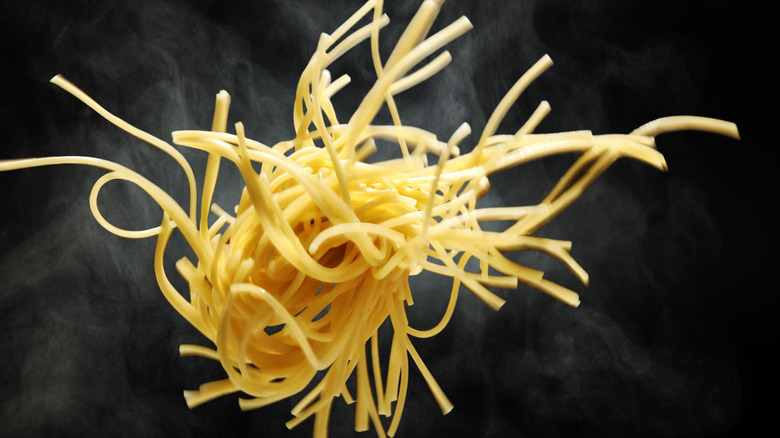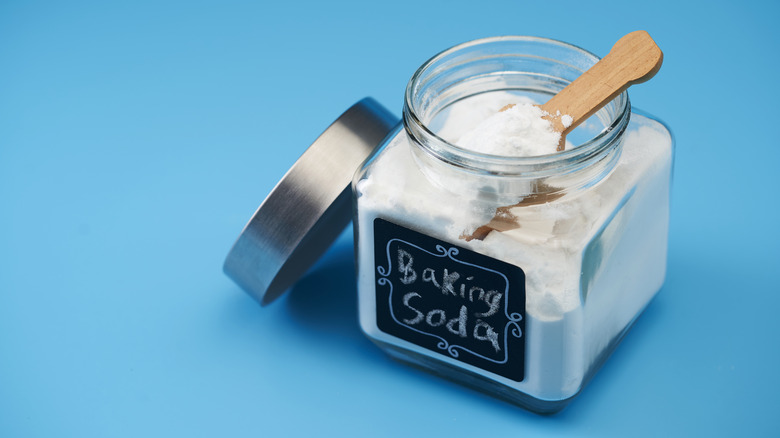How To Use Baking Soda To Transform Pasta Into A Ramen
We may receive a commission on purchases made from links.
There are three components to an immaculate bowl of ramen: the broth, toppings, and (of course) noodles with the perfect bite and chew. But when you're in a pinch or don't have access to fresh, authentic ramen noodles, turn to your pantry and reach for that box of spaghetti or angel hair pasta. These two shapes work best, as they are thinner and more closely resemble the real deal. With the science of baking soda, you will have ramen-style noodles in no time.
The traditional method of making ramen involves incorporating kansui minerals — an alkaline mixture of potassium carbonate and sodium carbonate – into the noodle dough. These salts are responsible for the characteristic flavor of ramen noodles, and impart a distinct, firm chew by reacting with and strengthening the wheat proteins. Brands also sell kansui powder, in which you can cook your noodles to achieve a similar ramen-like texture.
At a fraction of the cost, baking soda accomplishes a similar result, owing to its alkaline properties, which mimic the traditional kansui used in authentic ramen noodles. When pasta is cooked in water with baking soda at a ratio of 2-3 teaspoons of baking soda per quart of salted boiling water, the alkaline environment affects the proteins and starches in the wheat flour, creating that bouncy noodle texture that we crave when slurping on a steaming bowl of ramen. The resulting noodles will have that distinctive springy bite and subtle mineral taste that's characteristic of ramen, and when served in a flavorful broth with your favorite toppings, the taste is barely noticeable. However, adding too much baking soda or letting much of the cooking water evaporate can result in a concentrated, unappealing taste. Also note that you'll need to bake your baking soda in the oven for about two hours before using it for ramen.
The versatility of baking soda in the kitchen
Baking soda is a kitchen powerhouse that extends far beyond its use in baking. Known scientifically as sodium bicarbonate, it has a variety of uses in the kitchen. Baking soda can help you achieve a clean oven, and you can even reach for some baking soda to clean your cutting boards. When it comes to food and drinks, baking soda can be a magical ingredient to enhance the quality of the final dish. In baking, baking soda reacts with acidic ingredients like buttermilk or vinegar to create carbon dioxide bubbles, giving rise to fluffy pancakes and soft cakes. You can also brew your next coffee with baking soda to yield a more pleasant, less acidic flavor. Adding baking soda to a homemade tomato sauce recipe is a nonna-approved technique to lessen the acidity from the tart tomatoes.
This simple pantry ingredient can also cut down the onion caramelization process to less than 15 minutes by increasing the pH, facilitating the Maillard reaction, which causes the onions to soften and brown more quickly. Apart from cooking, it's a powerful produce cleaner, helping to remove residues and wax coatings. Who knew that a versatile solution to your cooking and cleaning needs was hanging out in your pantry this whole time?

